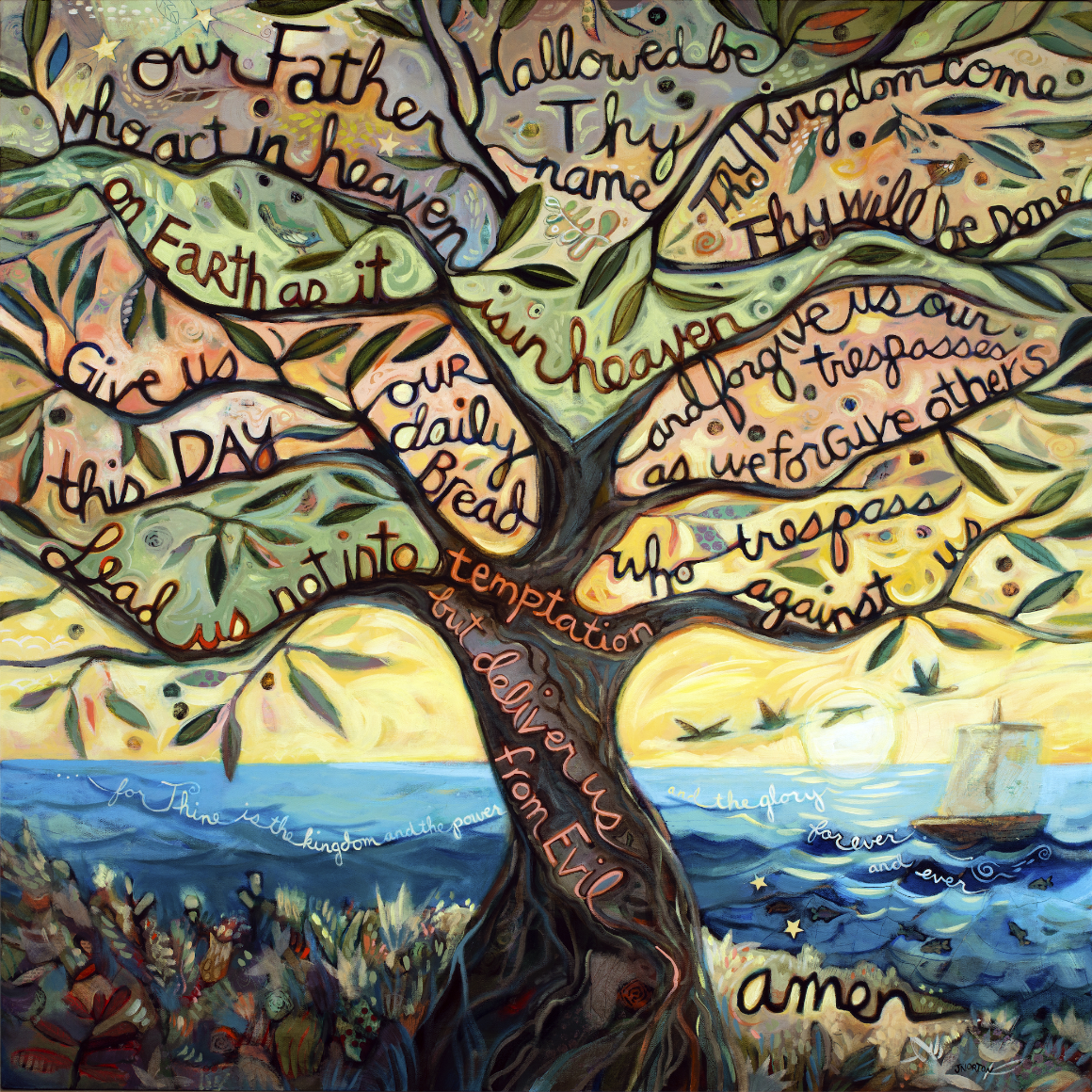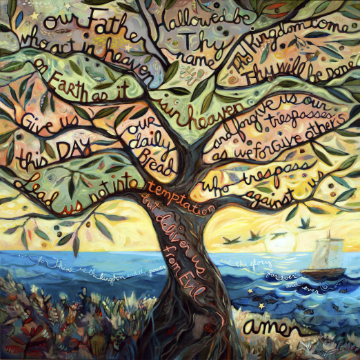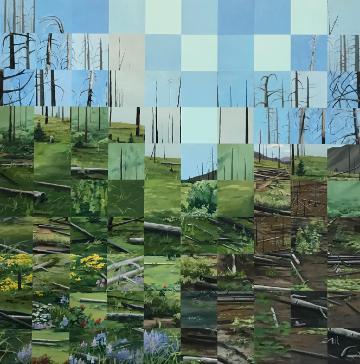
How Beauty Can Inspire a Sense of Duty
Reflections on Laudato Si

By Aleksandar Zecevic
Professor, Electrical and Computer Engineering Department
Co-Associate Dean for Mission, Culture, and Inclusion
For some time now, I have been working on a sequel to my 2018 book The Beauty of Nature and The Nature of Beauty, which focused on interdisciplinary aesthetics. One of the topics that I was planning to explore was the relationship between ethics and aesthetics, following the ancient idea that the true, the good, and the beautiful represent fundamental attributes of being (and must therefore be connected on some level). This turned out to be quite a challenge, however, because ethics and aesthetics differ in several important ways. One of them has to do with the way we make judgments—it is by no means clear, for example, whether claims about beauty can ever be universal, given that they inevitably involve a subjective component. Moral judgments, on the other hand, have to be completely objective in order to be binding for everyone who accepts a certain set of ethical norms.
I joined the reading group on the Catholic intellectual tradition with these questions in the back of my mind, hoping that our conversations might offer some new ideas and insights. They most certainly did, but not in the way I expected. Toward the end of the spring quarter, we discussed the two latest papal encyclicals, Laudato Si and Fratelli Tutti, mainly from the perspective of social justice. In reading these two documents, I discovered that they have a common thread that allows for a natural connection between ethics, aesthetics, and theology, especially in the context of the current environmental crisis. In what follows, I would like to briefly outline how such a connection can be made, and why I think it might be conducive to the moral and spiritual formation of our students.
The Inadequacies of Technology
There is broad agreement in the scientific community that technology alone cannot reverse climate change or undo the damage that humans have done to the environment. For this to be possible (even theoretically), it is also necessary to make some fundamental changes in the way people behave, and ensure that these changes are permanent.
The fact that technology and human behavior must act in a coordinated manner in order to achieve this goal implies that we need experts who possess both technical knowledge and an understanding of what motivates people to make sacrifices for the greater good. Pope Francis recognizes this need in Laudato Si, in his discussion of how technological progress is understood in contemporary society:
There is a tendency to believe that every increase in power means an increase of progress itself ... as if reality, goodness and truth automatically flow from technological and economic power. ... We have certain superficial mechanisms, but we cannot claim to have a sound ethics, a culture and spirituality genuinely capable of setting limits and teaching clear-minded self- restraint.
I believe that Jesuit universities are uniquely positioned to produce individuals who can competently address this challenge, because they value broad interdisciplinarity and do not shy away from embedding it into their curricula. The question, however, is how these diverse areas of human inquiry can be combined in a coherent manner, and how such “integrated” knowledge can be used to form our students into individuals who genuinely care about the environment.
Having given this question a good deal of thought, I arrived at the conclusion that Ignatian spirituality provides a natural starting point for such a project, because it explicitly embraces the idea of finding God in all things. In the remainder of this essay, I will try to explain why I believe this to be the case.
Changing Our Attitude Toward Nature
Perhaps the most obvious reason for changing our attitude toward nature is the existential threat that the environmental crisis poses to humanity. The fear that this threat instills in us is a powerful motivating factor, but it is unclear whether this is sufficient to permanently alter our habits (particularly if significant sacrifices are involved). Given that fear is an inherently unpleasant feeling, sooner or later our psychological defense mechanisms kick in, and other things move to the forefront of our attention. It seems to me, therefore, that we should look for motivating factors that are more “positive” and follow naturally from our fundamental beliefs and values.
One such possibility is related to the belief that nature is beautiful and is consequently worth preserving (much like a great work of art). Such a view was widespread in the 18th and 19th centuries, and figures prominently in the writings of early American naturalists as well (John Muir and Henry David Thoreau are typical examples.) To me, this approach has a definite intuitive appeal, but in order for it to be practical, one has to establish that everything in nature can actually be characterized as beautiful. This is undoubtedly a tall order, because it is easy to admire the grace of an antelope or the rugged peaks of the Alps, but it is by no means obvious how one can extend this attitude to mosquitoes or cockroaches.
Some have argued that scientific knowledge can help us circumvent this problem. Environmentalist philosopher Allen Carlson maintains, for example, that
All of nature necessarily reveals the natural order. Although it may be easier to perceive and understand in some cases more than in others, it is yet present in every case and can be appreciated once our awareness and understanding of the forces which produce it is adequately developed. In this sense, all nature is equally appreciable.
Even if we accept Carlson’s approach (which is known as “positive aesthetics”), however, the question remains whether such arguments can give rise to a moral obligation to preserve nature. Some authors, such as Yuriko Saito, believe that they can:
As John Dewey reminds us, the moral function of art is ‘to remove prejudice, do away with the scales that prevent the eye from seeing’ ... Appreciating art on its own terms helps us cultivate this moral capacity of recognizing and understanding the other’s reality through sympathetic imagination. Perhaps we can derive an equivalent moral criterion for the appropriate aesthetic appreciation of nature.
While I don’t necessarily disagree with Saito’s line of reasoning, it seems to me that the transition from “beauty to duty” is not as straightforward as she suggests. As much as I enjoy philosophical discourse, I seriously doubt that arguments of this sort can persuade large numbers of people to permanently modify their behavior. We are ultimately emotional creatures, and any appeal for fundamental changes must resonate with us on a level that is deeper, and is not purely rational. This is where religion comes into the picture.

Jen Norton, Our Father, 2014
The Theological Perspective
Before we consider how a theological perspective can help improve our attitudes toward nature, it might be helpful to briefly discuss the opposite view. Perhaps the most explicit statement of this outlook is Lynn White’s highly influential paper The Historical Roots of the Ecological Crisis, which he concludes with the following words:
The greatest spiritual revolutionary in Western history, Saint Francis, proposed what he thought was an alternative Christian view of nature and man’s relation to it; he tried to substitute the idea of the equality of all creatures, including man, for the idea of man’s limitless rule of creation. He failed. Both our present science and our present technology are so tinctured with orthodox Christian arrogance toward nature that no solution for our ecologic crisis can be expected from them alone. Since the roots of our trouble are so largely religious, the remedy must also be essentially religious.
If we combine this paragraph with the well- known passage from Genesis 1, which claims that humans should have “dominion” over the earth, it would appear that Christianity has a lot of explaining to do.
Reading Laudato Si helped me recognize, however, that such simplistic views grossly misinterpret the Christian tradition and its teachings. This encyclical explicitly recognizes the intrinsic value of creation as a whole, and advocates a symbiotic relationship between humans and the natural world. It also sees the practice of “finding God in all things” as a key element in establishing such a relationship. If this becomes our habitual way of looking at the world, every individual and every natural form (whether living or inanimate) will become worthy of our care and attention.
Pope Francis makes this point early in Laudato Si, quoting the Patriarch of Constantinople, Bartholomew I (who, by the way, is known as the “green” patriarch because of his longstanding concern for the environment):
It is our humble conviction that the divine and human meet in the slightest detail in the seamless garment of God’s creation. Pope Francis then goes on to say: “Saint Francis, faithful to the Scripture, invites us to see nature as a magnificent book in which God speaks to us and grants us a glimpse of his goodness."
Although the pope refers to divine goodness in this particular instance, he subsequently turns to the notion of divine beauty in his remarks about the intrinsic value of the natural world:
Encountering God does not mean fleeing from this world or turning our back on nature. This is especially clear in the spirituality of the Christian East. Beauty, which in the East is one of the best loved names expressing divine harmony ... appears everywhere; in the shape of a church, in the sounds, in the colors, in the scents.
In this way, he makes a powerful case for our obligation toward the environment, which stems directly from the foundations of Christian faith. Indeed, those who truly see reflections of divine beauty in all things can never condone the destruction of nature, because this would go against their core beliefs.
Personally, I find this idea very appealing, but being an engineer by training, I cannot help wondering about its practicality. It is by no means obvious, for example, how one should go about “finding God in all things”. Nor is it clear whether this path open to everyone, or is reserved only for mystics.
In searching for answers to these questions, I did what most academics do—I started reading whatever I could find on the subject. In the process I came across a number of interesting texts, some of which came from non-Catholic traditions. I discovered (among other things) that “finding God in all things” was a prominent theme among Greek theologians of the first millennium, and that their views on this subject were remarkably consistent with those espoused by Jesuits. What I found particularly interesting in this context was that St. Francis was by no means alone in his belief that every living being is worthy of our love and attention (which is what Lynn White appears to suggest in his essay). The seventh- century theologian St. Isaac the Syrian, for example, teaches us in his Ascetic Homilies to:
Love all of God’s creation, both the whole of it and every grain of sand. ... Love animals, love plants, love each thing. If you love each thing, you will perceive the mystery of God in things.
Perhaps the most comprehensive theological treatment of this subject in Eastern Orthodox literature can be found in the writings of St. Maximus the Confessor, who maintained that seeing a reflection of divine beauty in all of creation is a critical first step on the path toward a spiritual union with God. He cautioned, however, that perceiving nature in this way requires extensive preparation, which starts with a purification of the soul. This entails (among other things) the practice of humility, which, according to him, “prevents us from foolishly growing confident in our own strength and wisdom.”
I must confess that discovering the writings of St. Maximus pleased my “inner engineer” greatly, since he attempted to systematically explain both why we can find God in all things, and how this might be accomplished. I found his emphasis on humility particularly appealing, because I believe that something similar applies to scientists as well.

Berkeley Hoerr, Regrowth
When I discuss this topic with my students (and yes, we do such things in the School of Engineering), I like to begin with a light-hearted statement that is commonly referred to as the “physicist’s prayer”:
“Lord, grant me humility, and by humility, I mean the following ... ”
I then contrast it to the words of Bertrand Russell (my favorite atheist thinker), who closed his History of Western Philosophy with the words:
Man, formerly too humble, begins to think of himself as almost God. ... In all this, I feel a grave danger, the danger of what might be called cosmic impiety. ... I am persuaded that this intoxication is the greatest danger of our time.
Although I very much doubt that this was his intent, Russell implicitly reinforces the theological claim that the environmental crisis cannot be properly addressed unless we undergo a radical transformation, and change how we perceive nature. Indeed, once we recognize that our understanding of universe is inherently limited (which modern science clearly affirms), it begins to make sense to speak of a “cosmic mystery,” which represents those aspects of reality that lie beyond human comprehension. At that point, we can perhaps rediscover the wisdom of the early Church fathers, who believed that nature can tell us something about this mystery, if we know how to look.
We may, of course, disagree about the character of this “invisible reality” (or “mystery”, if you prefer), but the fact remains that those who see it in a religious light are no less rational than those who see it as “cold and impersonal.” We can say this with confidence, because any claim that we make about the true nature of this mystery is an “undecidable proposition,” which we are entitled to accept or reject with equal logical justification.1
Regardless of which position we take in this debate, however, we must acknowledge that the intricate organization and beauty of nature inspire a certain sense of awe and wonder in us. If we additionally recognize that everything in nature is connected, and that these connections are often subtle and imperceptible, we will begin to value all aspects for the physical world, no matter how small and seemingly insignificant. This, to me, is how we can start to see God (or “the unfathomable mystery of nature” for those who are more secularly inclined) in all things. Once we do that, it becomes much easier to adopt habits that are conducive to the preservation of the environment.
Aleksandar Zecevic is a professor of electrical engineering at Santa Clara University, and the associate co-dean for Mission, Culture and Inclusion. His technical research interests include the control of complex systems, graph theoretic algorithms, electric power systems, nonlinear dynamics, and quantum computing. Over the past 20 years, Zecevic has also done a considerable amount of work in the area of science and religion. His two books: Truth, Beauty and the Limits of Knowledge and The Unknowable and the Counterintuitive are devoted to this topic. His most recent project has been a trilogy on interdisciplinary aesthetics.
Notes
1 Those who find this argument unconvincing are welcome to read up on Gödel’s Incompleteness Theorems, or the difference between Euclidean and non-Euclidean geometries.